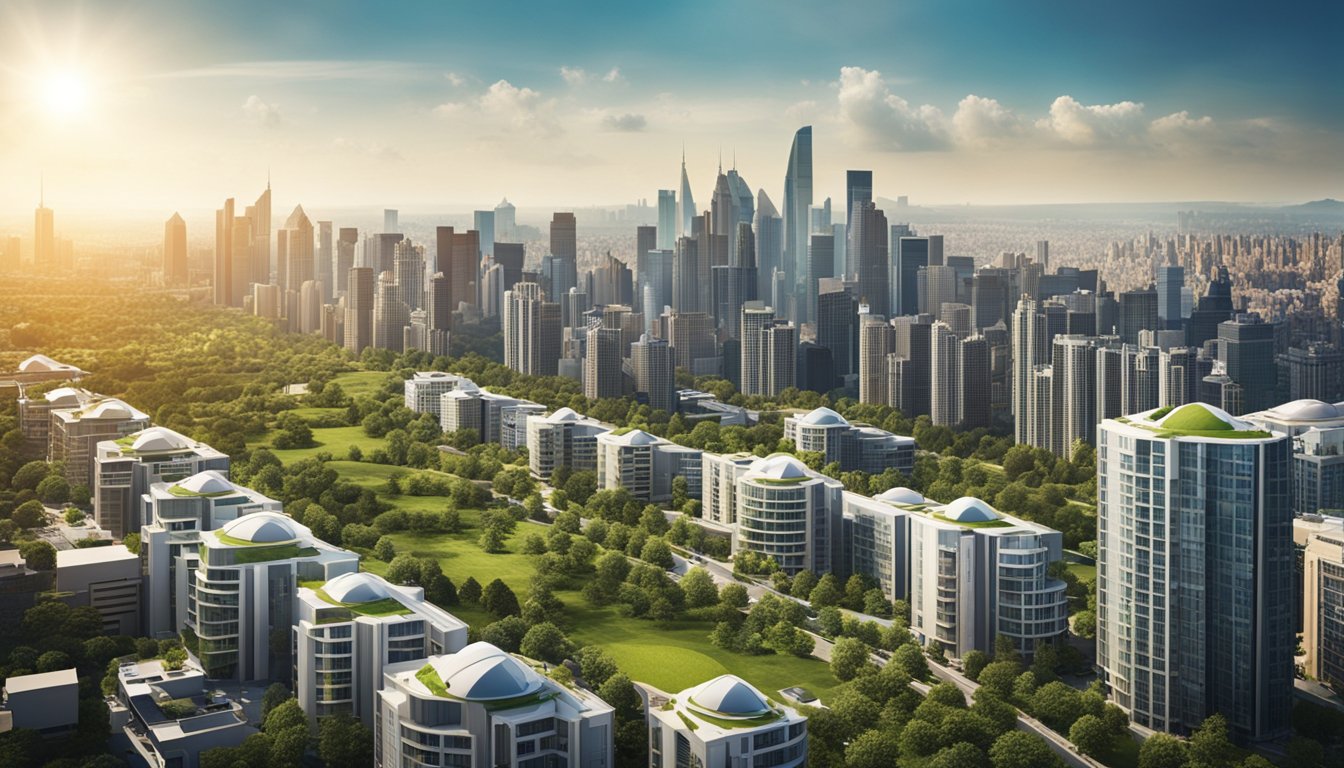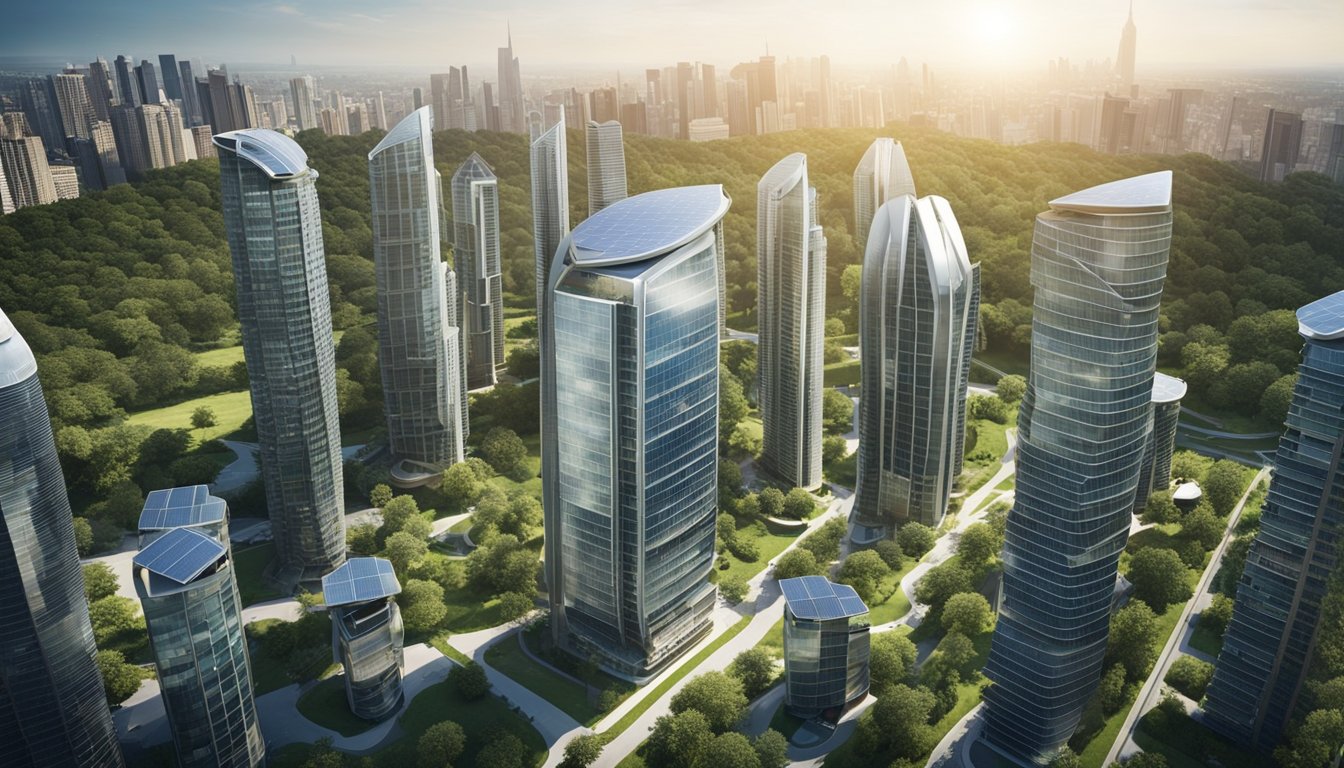Late updated: 22 Apr 2025 08:04
Written by: Eleanor Hartman
Innovative Urban Solar Solutions For UK Cities: Transforming Urban Energy Landscapes
The scarcity of urban space in the UK is leading to a remarkable shift towards innovative solar energy solutions. This transformation is crucial as growing cities aim to reduce carbon footprints and enhance energy independence. We recognise the need to integrate solar technology seamlessly into urban environments. Innovative solutions like solar carports and community-owned solar power projects are advancing urban energy efficiency and driving cities towards net zero goals. These initiatives are not just about sustainability; they also represent a strategic push for urban resilience.

Cities across the UK are embracing solar panels on rooftops and solar-powered urban farms. These initiatives help reduce reliance on traditional energy sources and encourage local communities to participate actively in renewable energy projects. Urban centres like London are setting ambitious targets to become Solar Cities, reflecting a broader trend in urban planning. This movement is supported by councils and community groups investing in photovoltaic (PV) technology, demonstrating the potential for significant environmental benefits and economic opportunities.
The implementation of urban solar solutions is not without its challenges. Yet, the potential rewards are vast, offering a promising path towards a sustainable future for our cities. By maximising available urban space for renewable energy, we can create a cleaner, greener environment while also empowering communities to take part in their energy supply.
Key Takeaways
- Urban solar solutions boost energy efficiency in UK cities.
- Community-driven projects promote active participation in solar power.
- Solar innovations support net zero goals and urban resilience.
Advancing Urban Solar Power in UK Cities
The future of urban energy in the UK is increasingly solar-powered. These solutions promise to transform infrastructure and reduce carbon emissions. They also hold the potential to seamlessly integrate renewable energy into everyday city life through innovative applications.
Integration of Solar Panels into Urban Infrastructure
In UK cities, integrating solar panels into existing urban infrastructure is crucial for advancing solar power. Solar carports, for instance, are gaining popularity. These car shelters fitted with solar panels not only provide shade but also generate electricity.
Rooftop solar systems on residential and commercial buildings are increasing. They take advantage of existing space, reducing reliance on non-renewable energy sources. Municipal buildings are also participating, setting an example for private sectors.
Road surfaces with embedded solar panels are another innovative approach. They generate electricity and could power streetlights, traffic lights, and other municipal utilities.
Solar Powered Urban Furniture and Smart City Solutions
Urban furniture powered by solar panels adds functionality to public spaces. Benches, equipped with solar panels, offer mobile charging stations, Wi-Fi hotspots, and even data gathering for city analytics, fostering connectivity.
We’re seeing the rise of solar-powered bus shelters and streetlights too. They reduce electricity consumption and maintenance costs, and bring visibility to solar energy in everyday life.
Incorporating these solutions ties into the broader agenda of creating smart cities. Utilising solar power, we enhance efficiency and sustainability, vital for urban areas seeking to cut emissions and minimise their environmental impact.
Role of Solar Energy in Reducing Carbon and CO2 Emissions
The use of solar energy is pivotal in reducing carbon and CO2 emissions in urban areas. By replacing fossil fuel-based power sources, solar systems significantly cut greenhouse gas emissions.
Cities embracing solar energy contribute to national carbon reduction targets. The shift to renewable energy sources reduces the carbon footprint of transportation and municipal operations.
Solar energy’s role in reducing emissions doesn’t stop there. By powering smart city technologies and urban infrastructure, solar power helps to create sustainable environments, promoting cleaner air and a healthier urban life.
Enhancing Energy Efficiency and Net Zero Goals through Innovative Urban Solar Solutions

Urban solar solutions play a critical role in boosting energy efficiency and moving towards net zero targets. They help in cutting down reliance on fossil fuels and lower greenhouse gas emissions. By integrating advanced technologies, cities can optimise energy infrastructures and improve resilience. Data-driven strategies significantly enhance solar deployments across urban landscapes.
Solar Contributions to Reducing Fossil Fuels and Greenhouse Gas Emissions
Solar energy is vital for mitigating climate change by diminishing dependence on fossil fuels. Utilising solar installations in urban areas helps in decreasing carbon footprints. Solar panels on rooftops and public buildings effectively convert sunlight into electricity, reducing oil and gas usage. These adaptations facilitate cleaner air and align with our net zero aspirations.
Moreover, advancements in solar technology enhance efficiency. High-efficiency panels and hybrid systems optimally generate power even in cloudy environments. The reduction in fossil fuel dependency leads to significant decreases in greenhouse gas emissions. As cities embrace renewable energy, urban environments become more sustainable, meeting eco-friendly targets.
Optimising Urban Energy Infrastructure and Integration with the National Grid
Optimising energy infrastructure within cities is essential for maximising solar potential. As we incorporate solar solutions, it's crucial to synchronise with the national grid to ensure stability and efficiency. Smart grids enable real-time monitoring and efficient energy distribution, allowing excess solar energy to be stored or redirected where needed.
Integration with the national grid reduces reliance on non-renewable sources. Adoption of electric vehicles in conjunction with urban solar infrastructure alleviates traffic congestion and fosters a collaborative approach towards net zero goals. By enhancing infrastructure, we create a resilient urban energy ecosystem that supports sustainable urban growth.
Data-Driven Approaches for Solar Deployment in Urban Environments
Harnessing data-driven approaches boosts solar deployment in cities. Analysing weather patterns, energy consumption, and geographic information enables strategic placement of solar panels. Accurate data collection aids in optimising energy output and reducing inefficiencies.
Technologies such as AI and IoT contribute to predictive maintenance and improved system performance. These tools ensure the effective tracking of energy generation and consumption, cutting costs and boosting reliability. As data proliferates, targeted and efficient solar deployments can significantly contribute to urban sustainability and energy efficiency objectives.
By focusing on these strategies, urban areas can effectively leverage solar energy to meet conservation and net zero targets.
Frequently Asked Questions

In addressing urban solar challenges, it is essential to explore specific technologies, integration strategies, cost-effective solutions, and storage advancements. The obstacles faced by UK cities, along with the potential contribution of urban solar power to national renewable energy goals, are vital areas to consider.
What are the leading technologies in urban solar power for densely populated areas?
We're seeing significant progress in the use of vertical solar panels on building facades and rooftops. Moreover, solar skins that blend with architecture are gaining popularity. Advanced photovoltaic cells with high efficiency are emerging as game-changers.
How can solar energy be effectively integrated into existing urban infrastructure?
Integrating solar into urban settings involves retrofitting rooftops and integrating panels into new buildings. The use of smart grids allows for efficient energy distribution. Collaborating with urban planners is key to seamless integration without disrupting city functionality.
What are the most cost-effective solar solutions for urban environments?
In UK cities, leveraging roof space for solar installations proves cost-efficient. Community solar projects reduce individual investment barriers. Tax incentives and government schemes bolster affordability, resulting in reduced initial costs for urban installations.
What are the barriers to adopting solar energy in UK cities and how can they be overcome?
Space limitations, aesthetic concerns, and regulatory challenges are among the primary barriers. Engaging local authorities to promote supportive policies and raising public awareness about the benefits of solar can address these issues. Access to funding and grants makes adoption more feasible.
How does urban solar power contribute to the UK’s renewable energy targets?
Urban solar installations significantly enhance the renewable energy mix. By transforming cities into energy-generating hubs, we contribute to national goals for emission reductions. Utilising underused urban spaces elevates solar power's role in achieving sustainability targets.
What are the latest advancements in solar power storage for cities?
Lithium-ion batteries have become more compact and efficient, making them ideal for urban settings. Additionally, developments in solar plus storage systems offer solutions to mitigate intermittency. These advancements fortify urban solar's reliability and utility.